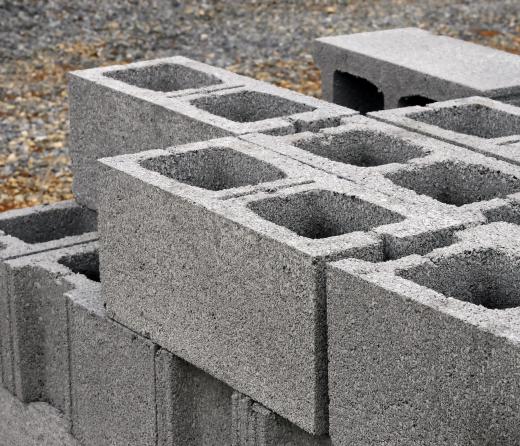Wythe, or withe, is a term for a vertical section of masonry that is one unit thick, meaning that it is constructed from a single line of masonry units. The units are usually bricks, made of clay or terracotta, or blocks, like those made of concrete. This term is often used when describing different kinds of wall construction. A masonry wall can be a single or a multiple wythe wall, and each type has its strengths and drawbacks. Brick veneer is a special kind of construction, and it is usually used to provide attractive, durable siding without performing a structural function.
In the past, structural walls were commonly made up of multiple wythes, using several layers of different masonry units like stone, clay, and concrete. These walls were often very solid and very thick but are also difficult to insulate because of the solid nature of the masonry. Examples of this type of construction include most clay brick and terracotta brick walls built in the early 20th century.

One common type of wall construction is made up of two wythes, usually with an outer layer of brick and an inner layer consisting of cinder or concrete blocks. The two sections are usually held together by metal ties or rows of header bricks, which are installed sideways at regular intervals. There are also rain-screen veneer walls that have an exterior made out of masonry, usually brick, that is separated from an inner, structural wall by a cavity. The cavity wall makes it easier to insulate, and also provides weatherproofing, by allowing water that gets inside the exterior wall to escape.

In recent times, structural walls have been commonly constructed as single wythe walls. This kind of wall is often built using over-sized bricks or concrete blocks. A wall like this is relatively cheap to build and low maintenance, is fire and sound proof, and can be very durable if built right. It has no cavity wall inside, however, so it needs to be constructed carefully to be weatherproof. Flashing and weep-holes have to be installed, and the surface has to be treated with a water repellent or paint. When constructing a single wythe wall, it is important to use the appropriate materials, both for the units, whether they are bricks or blocks, and for the mortar.
